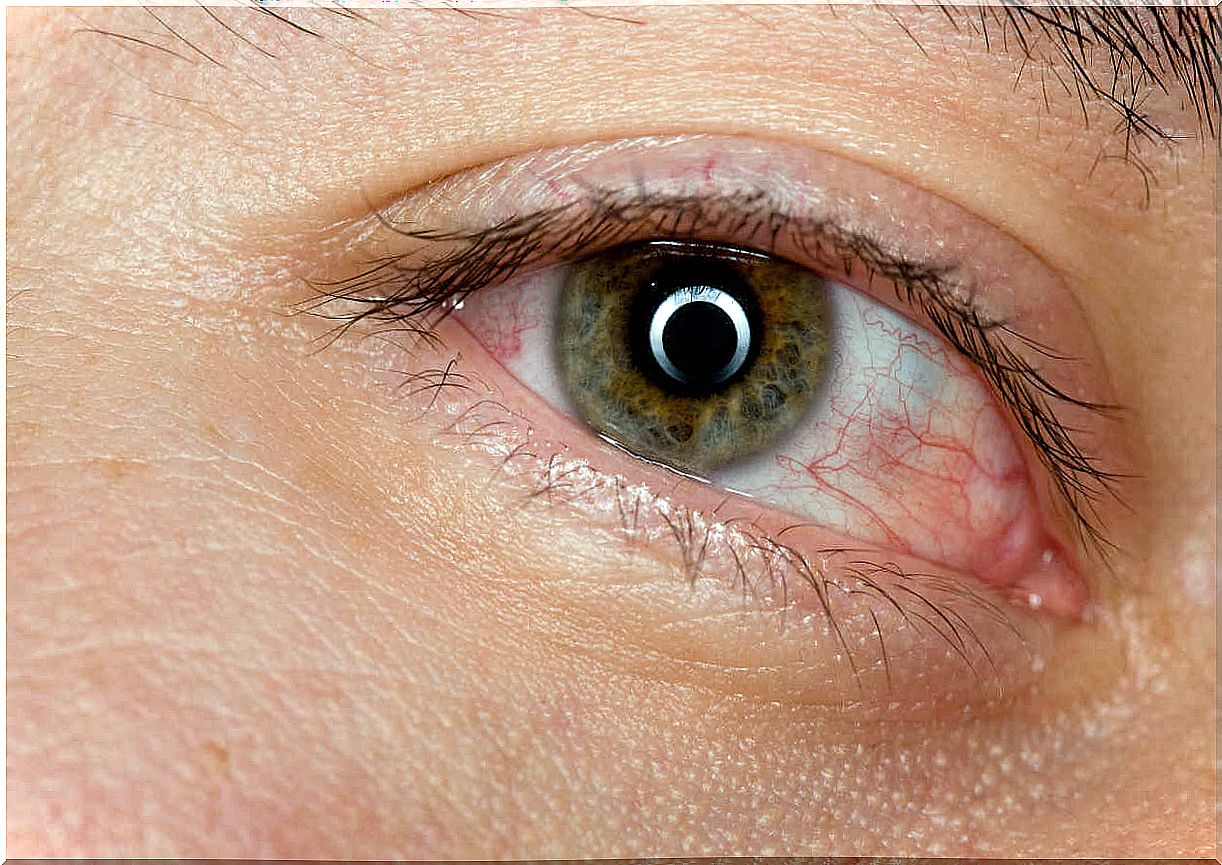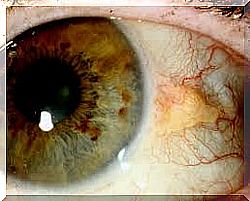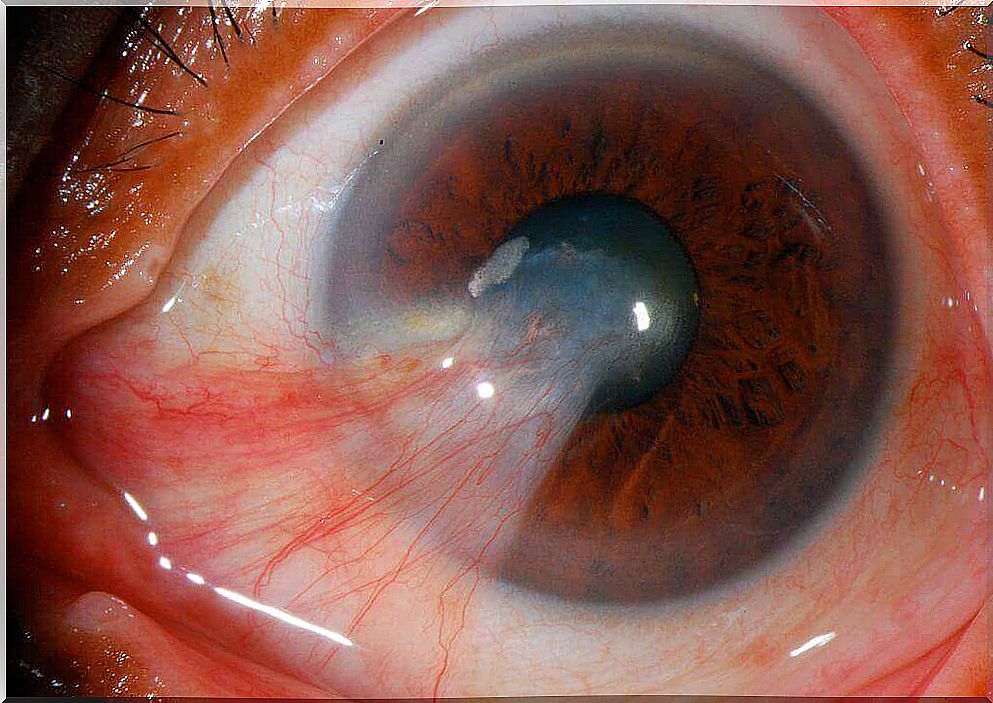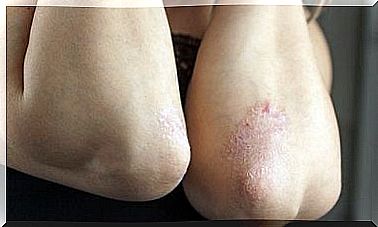Eye Tumors: Pinguecula And Pterygium
Everyone should take good care of their eyes. They are one of our most important senses, but at the same time they are very sensitive.

For most people, sight is the most important of the five senses. Eye tumors of the conjunctiva, such as the pinguecula and pterygium, are therefore a major nuisance. Find out more about them in this post.
Everyone should take good care of their eyes. They are one of our most important senses, but at the same time they are very sensitive. It is therefore very important to understand how eye tumors that affect the sense of sight come about. Because only in this way can they be recognized in time or even prevented. One of these diseases is the pinguecula.
Pinguecula is a degeneration of the conjunctiva, more precisely a yellowish, slightly raised and mostly triangular, rounded or elongated spot in the fissure of the eyelid on the edge of the cornea. It is benign but does not go away on its own, so it can only be removed surgically.
A pinguecula is sometimes so small that they do not see, but it can grow with time. In most cases, it does not affect vision. But in some people it causes irritation like a foreign body sensation.
Eye tumors: how does a pinguecula develop?

Scientists, such as the American Academy of Ophthalmology, agree that there are, among other things, the following triggers for a pinguecula :
- If the eyes are exposed to dust or wind,
- too much UV light,
- Body fat,
- dry eyes,
- hormonal changes,
- surgical interventions or
- taking certain medications.
Symptoms of a pinguecula
- Itching in the eye or reddening of the eyeball, especially near the cornea, pupil and iris
- Dryness in the eye,
- Irritation in the affected region,
- constant inflammation and
- constant feeling that something is in the eye, like dust or sand.
How do you treat a pinguecula?

In most cases, treatment is not urgently needed at first. However, it is advisable to be very vigilant if the pinguecula occurs in conjunction with other eye diseases.
Important to know: once it has been treated surgically, the pinguecula may arise again.
This happens about 30% to 40% of the time, so some patients choose another treatment option. However, surgical removal is advisable if the pinguecula is severe.
Two of these possible severe cases are:
First, when there is severe inflammation that is difficult or impossible to treat.
Second, when the pinguecula forms on the cornea or grows over it, because that affects vision. In both cases, the area around the eyes is very red and extremely itchy.
What is the difference between the pinguecula and pterygium eye tumors?
The pinguecula and pterygium are very similar, but there are some noticeable differences between the two. The pterygium is a tissue growth of the conjunctiva that contains blood vessels and is therefore more skin-colored. This clearly distinguishes them from the yellowish color of the pinguecula.
The pterygium, however, also has a triangular, rounded, or elongated shape. However, both occur in different places. In most cases, the pterygium forms on the cornea.
Important to know: Often the formation of a pterygium is the result of a previous pinguecula.
When the pterygium reaches a certain size, it changes the surface structure of the eye, which in turn results in astigmatism. This means that those affected perceive objects, images and outlines in a distorted manner due to an astigmatism.
Similarities Between Pinguecula and Pterygium

As mentioned earlier, there are a few similarities between the two. One exception, however, is the fact that a pterygium often occurs due to stress.
Even if they are benign growths, they should not be taken lightly. In the initial phase, both tumors show the same symptoms, which can lead to confusion between them.
Given these circumstances, experts recommend taking preventive measures. Sunlight influences the development of both types of tumors, as does body fat and small particles in the air. This is why doctors advise wearing protective goggles or sunglasses when working outside for a long time.
Age can also play a role in whether a pinguecula or pterygium develops. Therefore, older people are advised to have their eyes checked regularly by a doctor.









